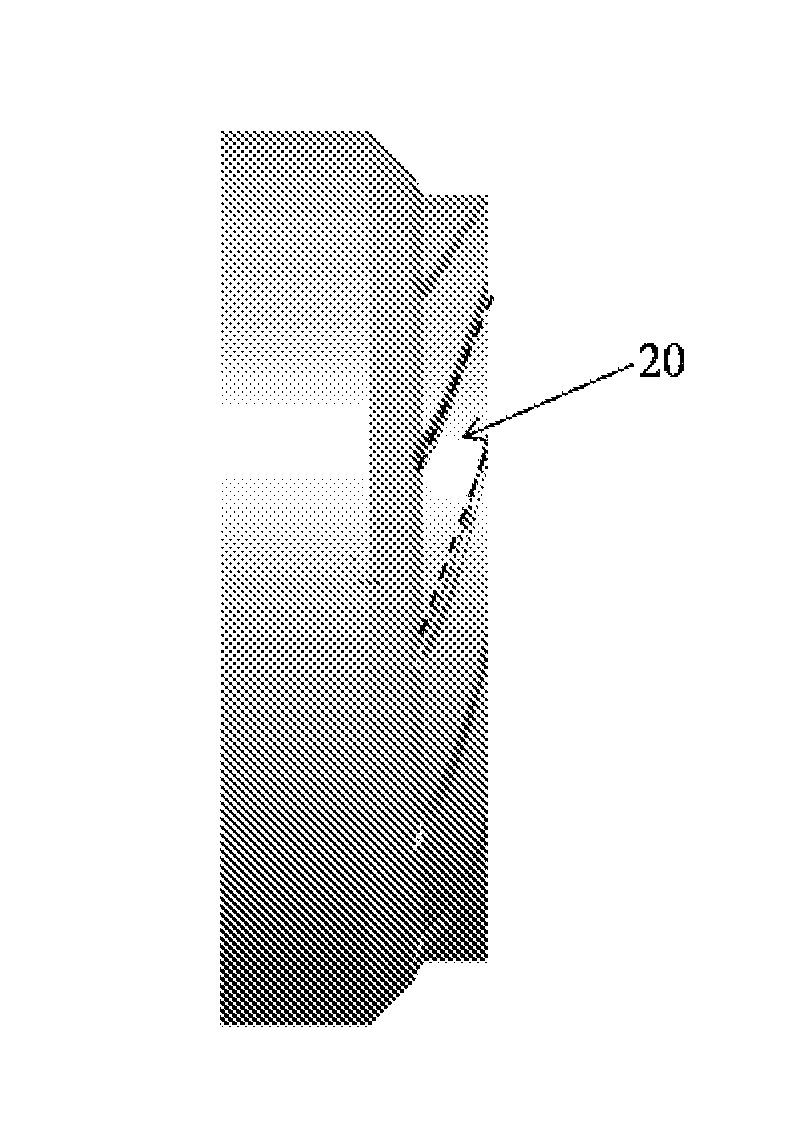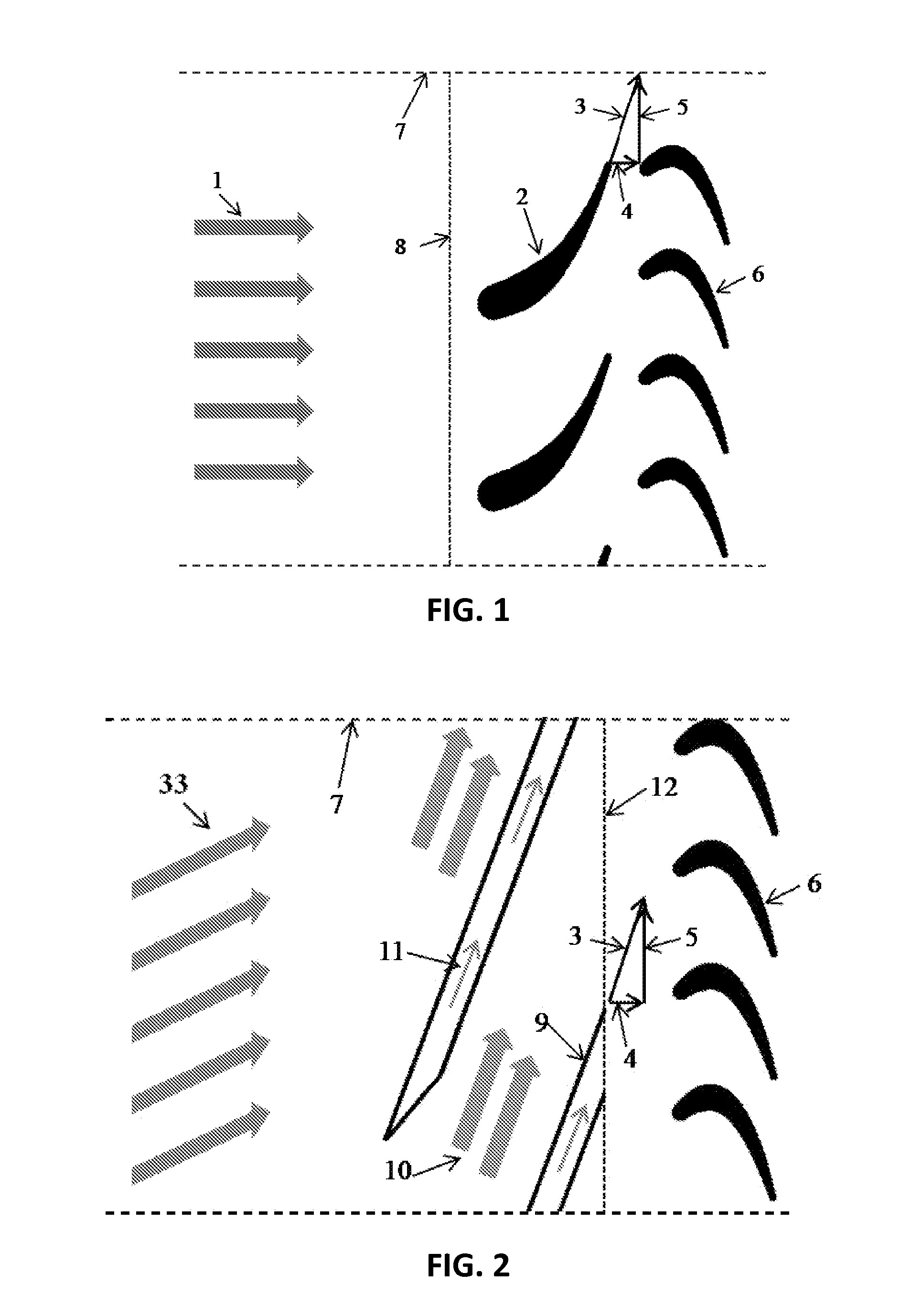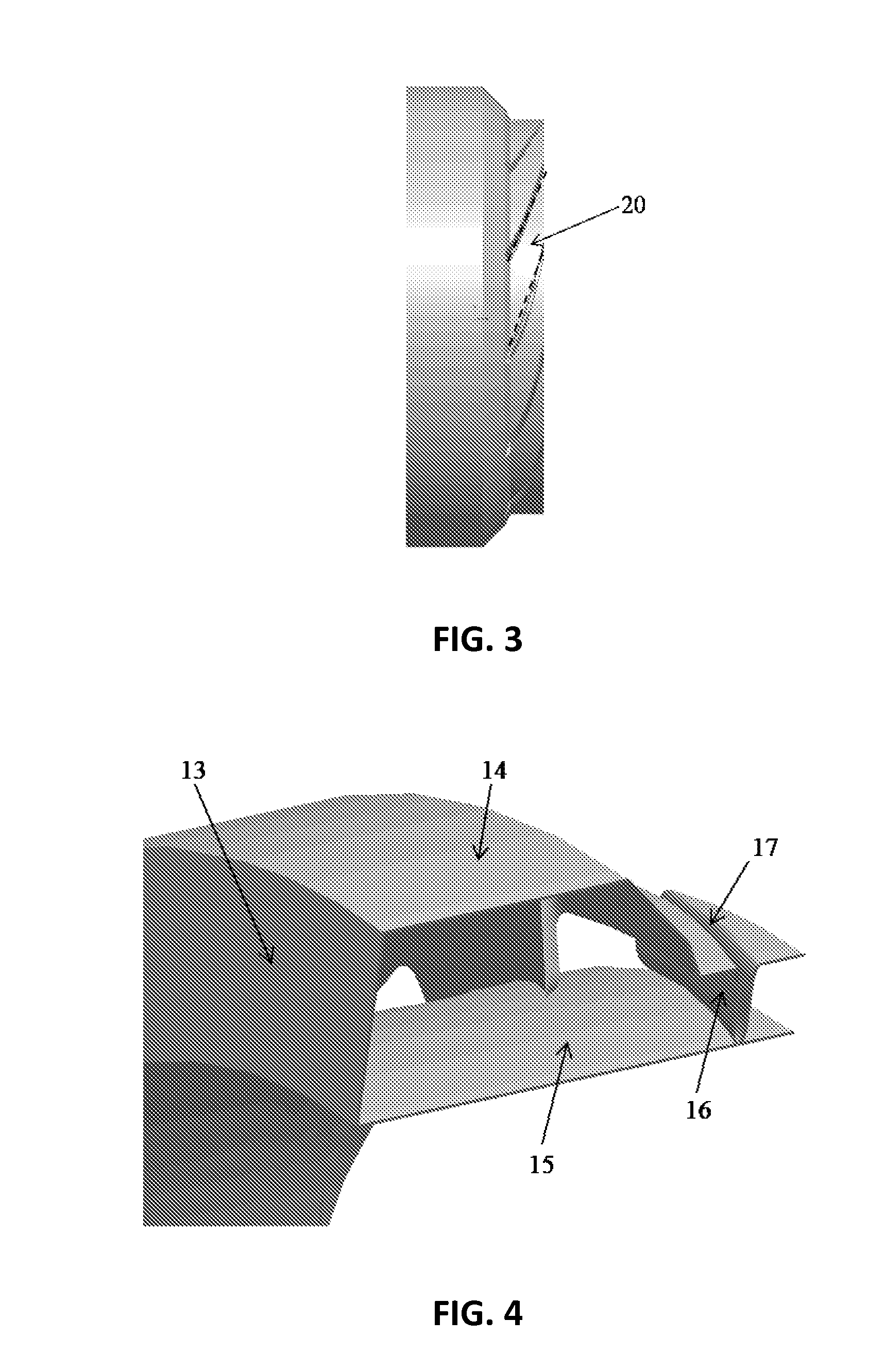Tangential combustor with vaneless turbine for use on gas turbine engines
a combustor and vaneless technology, which is applied in the direction of machines/engines, efficient propulsion technologies, light and heating apparatus, etc., can solve the problems of reducing the life of components, reducing the cost of manufacturing, and reducing the size of the required section, so as to reduce the length of the corrugation section, reduce the cost of manufacturing, and reduce the required size
- Summary
- Abstract
- Description
- Claims
- Application Information
AI Technical Summary
Benefits of technology
Problems solved by technology
Method used
Image
Examples
Embodiment Construction
[0027]FIG. 1 shows the general premise of the combustor and first stage turbine of a gas turbine engine. Hot, combusted gases 1 flow in the longitudinal direction where they exit the combustor threshold 8. From there, the gases are accelerated and guided by the first stage vane 2 from which the gases now have a resultant velocity 3 with a longitudinal component 4 and a circumferential component 5 and minimal radial component. This accelerated and turned gas flow then flows around the first stage turbine blades 6, where work is extracted and transferred to the turbine blades and the rotor connected thereto.
[0028]FIG. 2 shows the general premise of the invention and consists of the modified combustor and first stage turbine blades, which are to work on a gas turbine engine. Here, hot combusted gases that have a substantial circumferential component of velocity 33 from the tangentially aimed fuel air nozzles, flow through the combustor where it is further turned and accelerated through...
PUM
 Login to View More
Login to View More Abstract
Description
Claims
Application Information
 Login to View More
Login to View More - R&D
- Intellectual Property
- Life Sciences
- Materials
- Tech Scout
- Unparalleled Data Quality
- Higher Quality Content
- 60% Fewer Hallucinations
Browse by: Latest US Patents, China's latest patents, Technical Efficacy Thesaurus, Application Domain, Technology Topic, Popular Technical Reports.
© 2025 PatSnap. All rights reserved.Legal|Privacy policy|Modern Slavery Act Transparency Statement|Sitemap|About US| Contact US: help@patsnap.com



